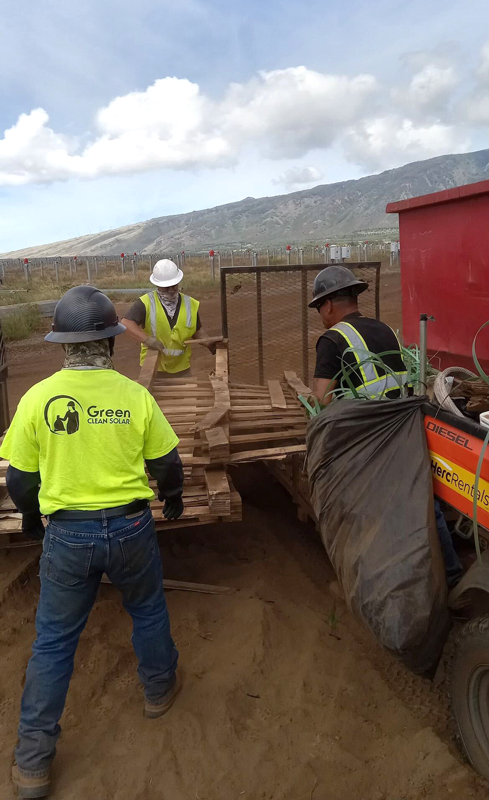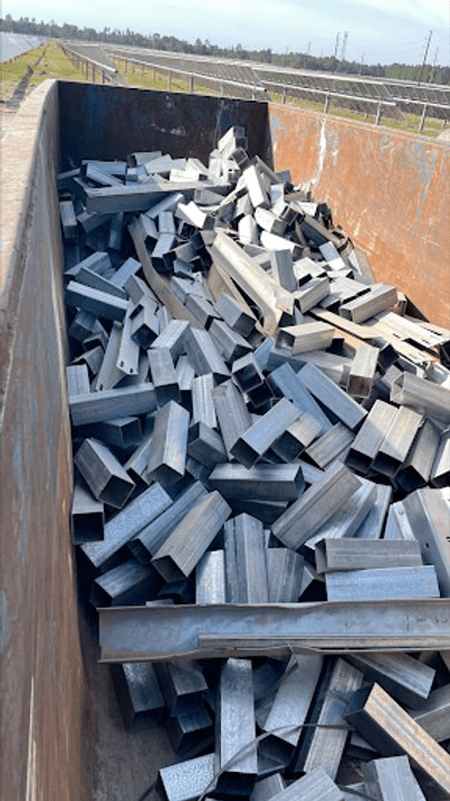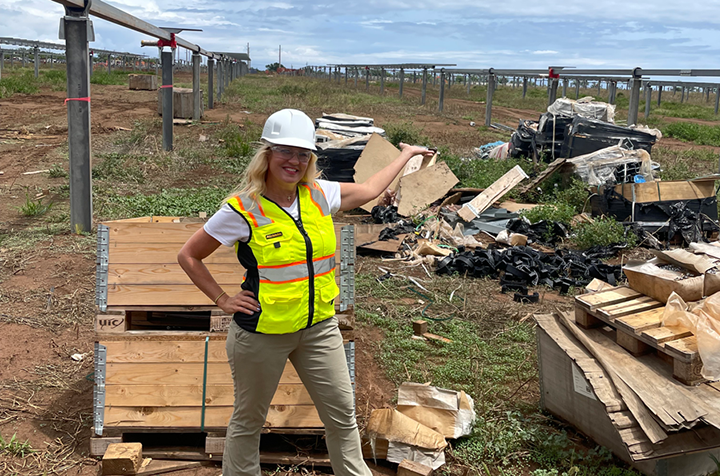Utility-scale solar projects are pivotal in the global transition to renewable energy, and these projects contribute to a predictable and stable renewable energy source. Predictions indicate that utility solar will continue to dominate solar installation projects in the coming years, pushing us closer to a renewable energy dominated world by the mid-2030s.


From Solar to Solar Waste
With a decade-long journey through the solar sector, I’ve had a front-row seat to the thrilling boom of renewable energy and also the less glamorous reality of the waste we generate. I’ve stood on vast utility solar fields, and been at the helm of massive pile-driving projects, all the while witnessing the mounting waste that our industry – despite its green intentions – inevitably produces.
Today, the International Renewable Energy Agency (IRENA) projects that up to 78 million metric tons of solar panels will reach the end of their life by 2050, with an annual increase of six million metric tons of new solar waste. This stark statistic has driven me to turn this challenge into an opportunity for the entire solar industry. The great thing is that people want to see this change, and those in the solar industry welcome better waste practices.
As the CEO and owner of Green Clean Solar, it’s not just about cleaning up after projects; it’s about revolutionizing the way we think about solar waste management and transforming pain points of the industry into sustainable, circular economy-style solutions.
My path into the solar industry started with my first solar business, a leading mechanical installation company, where I learned the industry ropes. During my time on site, I would have clients comment on the waste; it made the beautiful newly installed arrays look bad. That’s when I began to ensure a cleanup process accompanied every installation; it became a bit of a strategy for me. I would make sure the site was ready for commissioning by removing all the waste, and it became a standard to have a pristine site that looked better than my competitors. A clean solar site reads as competent, efficient and safe, and owners like to see this.
The industry standard, however, has been to get huge roll-off bins and send all the waste to the landfill – no separating, no recycling. After a while, knowing we were installing these massive clean energy systems that produced all this waste didn’t sit right with me.
So, in 2022, I launched Green Clean Solar, a company dedicated to recycling waste from large-scale solar sites. I was convinced that this is a crucial issue that needs tackling, and someone must lead it because it’s not just the broken or spent panels. We’ve adopted a comprehensive approach, aiming to recover all materials from a site, including cardboard, wood pallets, scrap metal, plastic and whatever else is unique to a site that we can find a market for.


What Recycled Materials Get Made Into
With many of the solar installation sites on vast fields in the middle of the country, often without a ton of local resources, we have to get very creative in how we address recycling. Each job needs a dedicated assessment to see what is being produced. Then we use our network of local recyclers, and this is where geography takes over in response to what various materials are made into: It really depends on the needs of the region.
Cardboard Boxes
Cardboard plays a significant role in the shipping and installation of solar panel systems, particularly in large-scale projects. Often, cardboard boxes are used to transport solar panels to installation sites, with an estimated 133 boxes per MW of installed solar capacity. For instance, a 74.5 MW facility developed by Florida Power & Light reportedly used approximately 9,900 cardboard boxes for shipping their panels. After use, these boxes typically end up in rented dumpsters and, ultimately, landfills.
However, cardboard is highly recyclable, with 75 percent of existing cardboard made from previously recycled cardboard. It is also energy-efficient to recycle, as it takes only 75 percent of the energy needed to make new cardboard. Recycling cardboard produces 50 percent less sulfur dioxide, a harmful air pollutant, compared to making cardboard from raw materials. One ton of recycled cardboard can save about 380 to 475 gallons of oil and other fossil fuels and 5,000 kilowatts of energy. Given these factors, it is beneficial for the environment and cost-effective for companies to recycle cardboard.
We’ve had our cardboard boxes recycled into new boxes for a famous N.Y. deli. In Hawaii, where land is precious, and all efforts to divert from landfills are appreciated, cardboard was used at a local tree nursery as ground cover around trees. The cardboard biodegrades and the soil retains more moisture. Our partners share their stories with us, and the outcome of their usage varies from region to region.


Wood Pallets
Indeed, the production of wood pallets is a global operation, and a portion of them end up in landfills. Reselling undamaged pallets, composting them into landscape mulch or recycling them into wood chips for vegetation growth are some of the strategies that can help reduce the wood waste footprint of solar projects. The percentage of recycled wood pallets can increase with concerted efforts from the utility solar industry to reduce post-project pallet waste or by leveraging solutions like PVpallet that offer reusable pallets for panel transport.
Metal
Recycled industrial scrap metal, particularly steel, undergoes a transformative process to be reused in a variety of applications. The recycling process reduces the material’s carbon footprint significantly, making it a key player in the quest for sustainability. Recycled steel and aluminum can be used in the construction of racking, contributing to the renewable energy sector. It can be used in the manufacturing of products like cars, appliances and packaging.
The symbiotic relationship between the steel or aluminum and solar industries is facilitating the transition towards a greener future, and the reshoring of steel production to the U.S. is further supporting this mission. The use of recycled steel helps to conserve natural resources, reduce emissions, and support the goal of net zero emissions in steel production by 2050. In one project, we cleaned up scrap steel, which became rebar, and went back into the construction industry.


Minimizing Waste from the Source
As the solar energy industry continues to expand, it’s crucial to consider the circularity of the manufacturing process, most of the supply chain, and packaging choices along the way that make it easier to recover materials downstream. An often overlooked aspect of this process is the packaging materials used for solar equipment. These materials, which can include everything from plastic straps to wooden crates, often end up as waste. However, by starting with the producers and rethinking their packaging approach, solar manufacturers can reduce this waste and make their operations more sustainable.
One of the main challenges in this area is using mixed materials, which are often hard to recycle. Plastic straps with metal staples, for example, can’t easily be separated for recycling, making them more likely to end up in the trash. However, manufacturers can make their packaging more recyclable by simplifying packaging materials, opting for reusable options where viable, choosing mono-materials to avoid cross-contamination, and reducing empty space. In addition, they can educate customers on proper recycling procedures and work with suppliers to find more sustainable packaging solutions. Through these efforts, the solar industry can move toward a more circular model, reducing waste and improving overall sustainability in a measurable way.
Emilie Oxel O’Leary is the CEO and owner of Green Clean Solar. She has a strong passion and expertise in the solar industry focusing on waste management and landfill diversion services while building a diverse workforce. Her previous company (which she started and sold!) installed solar on many well-known companies across the nation such as Amazon, L’Oreal, Target, Perry Ellis and Blue Cross Blue Shield. O’Leary continues to develop and foster relationships with EPC, owners and solar manufacturers throughout the U.S. while making Green Clean Solar a leader in the industry. Phone (770) 229-7168. www.greenclean-solar.com



